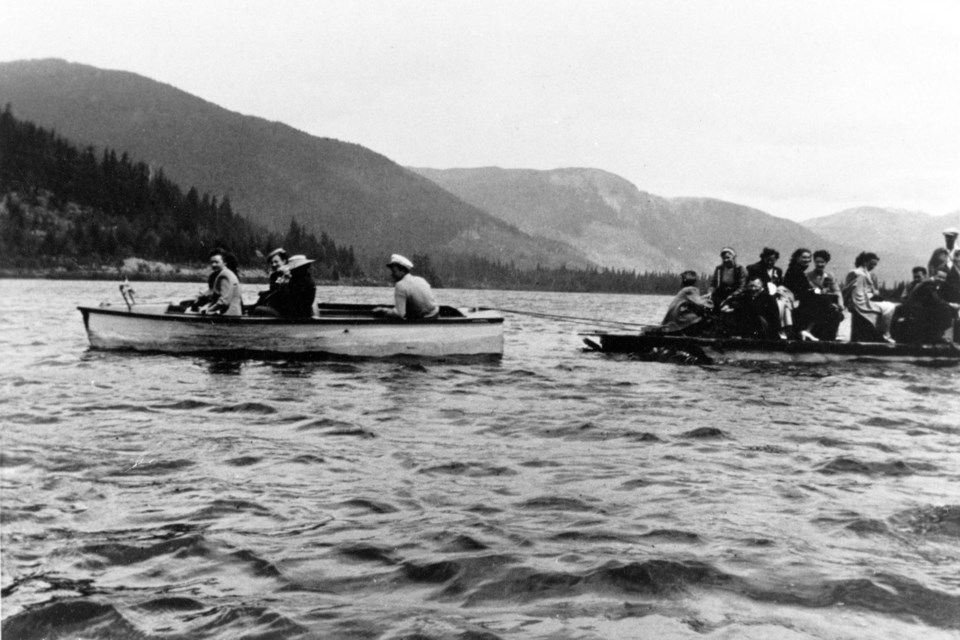Rafting has long been a favourite summer leisure activity throughout the Whistler Valley. In 1913, Alex and Myrtle Philip bought their four-hectare property on Alta Lake for $700 (where Rainbow Park is today). Rainbow Lodge and the Pacific Great Eastern (PGE) Railway were both completed the next year in 1914, and together they started offering Fisherman’s Excursions. The $6 package deal included train passage and a fully catered weekend of fishing at Rainbow Lodge. When the first group of 24 anglers disembarked the train for the Fishermen’s Excursion, Rainbow Lodge had multiple wooden rafts and one boat that visitors would fish from. The first excursion was a huge success, with everyone catching fish. News of the fishing on Alta Lake spread rapidly throughout Vancouver, bringing a continual stream of visitors to Rainbow Lodge in the summer.
When Hillcrest Lodge opened in 1946, rafting also played a role in entertaining guests. When new guests arrived at the train station, they would be greeted by current guests in costume and then transported across the lake in a convoy of rafts. During the stay, Hillcrest Lodge offered many organized activities for guests. One of their favourites was the musical raft ride around Alta Lake, not unlike those that float around on warm summer days today. Raft rides would also be used to transport locals and guests to and from the Saturday night community hall dances. The community would look forward to these dances and come out in force, with Rainbow Lodge and Hillcrest Lodge sharing the catering for these popular events.
Seventy years after Myrtle and Alex bought their land on Alta Lake, the first commercial whitewater rafting venture in Whistler started. Whistler was still developing as a summer destination when Whistler River Adventures opened in 1983. Asked about how things changed in the rafting business over his 27 years as owner/manager, Brian Leighton was quick to say, “competition.”
In the early- to mid-1980s, anyone could start a rafting company, and many more whitewater rafting ventures popped up after Whistler River Adventures. Following some bad rafting accidents in 1987, including five people who drowned after their raft overturned on a logjam in the Elaho, the B.C. provincial government introduced stricter regulations. The regulations introduced mandates for each river, including rules on raft size and guide experience. Although many companies already chose to follow recommended safety guidelines, strict regulations had only been in place for five B.C. rivers prior to 1987. River-specific tenure for raft companies was also later introduced.
Remembering a trip that would not happen today, Brian recounted a staff tour along the Cheakamus River below Daisy Lake Dam. This area is now closed to commercial groups due to concerns about The Barrier breaking, which could result in massive downstream flooding and landslides from Garibaldi Lake. During the staff trip, the raft became stuck on a rock in the middle of the river. A staff member living in the now-gone Garibaldi Township saw a sandal float past on the river downstream of the stranded raft and went to see if everything was OK. Everyone was rescued, although the raft remained stuck. Whistler River Adventures knew the engineer working on Daisy Lake Dam, and the following day BC Hydro shut off the dam so that the raft could be retrieved from the rock. It was the ’80s, after all!
To help us collect and share stories, become a Whistler Museum member today. Annual membership is $25 for an individual or $40 for a family and can be purchased in the museum or by visiting our website at whistlermuseum.org.




